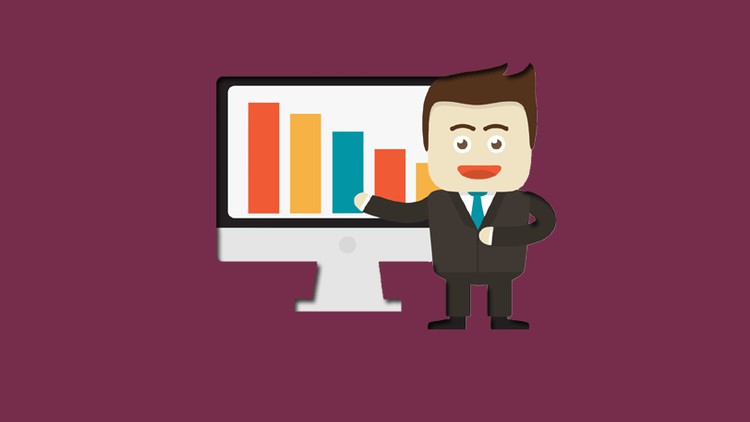
A Level Accounting 9706 (A2 Accounts – Manufacturing Accounts) – by Sir ARD in Urdu / Hindi
What you will learn
Candidates will have an understanding of:
• how to prepare a manufacturing account, to differentiate between direct and indirect expenses and to include factory profit
• how to prepare, for a manufacturing business, a statement of profit or loss and a statement of financial position
• how to account for manufacturing profit and the elimination of unrealised profit from unsold inventory
• the reasons why a business may account for manufacturing profit
Why take this course?
3.1.4 Manufacturing businesses
Candidates should have an understanding of:
• how to prepare a manufacturing account, to differentiate between direct and indirect expenses and to include factory profit
• how to prepare, for a manufacturing business, a statement of profit or loss and a statement of financial position
• how to account for manufacturing profit and the elimination of unrealised profit from unsold inventory
• the reasons why a business may account for manufacturing profit
Direct costs
Direct cost are cost that can be traced / identified easily in the product or service being manufactured e.g. direct material, direct labor& direct expenses the sum of all the direct costs is known as the prime cost
Examples
• Cost of raw materials including carriage inwards on those raw materials.
• Labor directly involved in producing a unit or providing a service
• Hire of special machinery for a job or royalty expense
Indirect cost
indirect costs are costs that cannot be easily traced / identified in the product or service being manufactured or we treat them indirect because costs are negligible e.g. indirect material, indirect labor & indirect expenses the sum of all the indirect costs is known as the overheads
Examples
• wages of cleaners
• wages of crane drivers
• rent of a factory
• depreciation of plant and machinery
• costs of operating forklift trucks
• factory power
• factory lighting
Administration expenses
‘Administration expenses’ consist of such items as managers’ salaries, legal and
accountancy charges, the depreciation of accounting machinery and secretarial salaries.
Selling and distribution expenses
‘Selling and distribution expenses’ are items such as sales staff’s salaries and commission, carriage outwards, depreciation of delivery vans, advertising and display expenses.
Financial charges
‘financial charges’ are expense items such as bank charges, discounts allowed and lease
costs
Manufacturing Account
An account or statement where a company calculates cost of production/manufacturing
cost. This helps in future decision making by comparing per unit cost with same products
available in the market.
An item of inventory could be in three different stages.
1. Raw material (product could be in raw shape like wood, sand, cement, nails etc)
2. Work in process (when good are partly completed, needs more work to be done to
complete).
3. Finished goods (when product is fully completed, ready for sale)
Why Factory should charge a profit
– Market or transfer price reflects the external purchase price which helps in make v
buy decision
– Profit is allocated between manufacturing and trading operations
– Help to give some credit to factory personnel because generally goods bought from
outside cost even more.
Why Factory should “NOT” charge a profit
– Overall profitability of the business does not change
– Factory profit would be unrealistic unless based on market prices
Exam Focused Theoretical Questions
Question. Why do we calculate manufacturing cost?
Answer. Manufacturing cost give us the cost incurred on producing/Manufacturing goods. We
calculate it because we would like to have per unit cost, which helps us in comparing cost with the same product available in the market. It helps us in future decision making, whether to continue production process or not it also helps us in controlling cost and other overheads.
Question. Explain the term Prime cost?
Answer. Prime cost is the primary cost to produce any item/product/good without which it
cannot be produced. It is the initial cost of production. Prime cost is the direct cost of production it includes direct raw material, direct labor and direct expense or we can say that, it we add all direct cost we can have the value of prime cost.
Question. Explain the two ways in which the going concern principle affects the value of
work in progress?
Answer. Going concern principle states that the business will continue its operation in the
foreseeable future.
1. Company uses the going concern principle because we expect the business to
continue for the foreseeable future.
2. This means that stocks should be valued to reflect its normal use in the business and
not the need to sell it immediately or auction basis.
3. Going concern value may be higher or lower as work in progress may require
finishing, incurring additional cost.
Question. Explain two ways in which the Prudence (Conservation) principle affects the value of
work in progress.
Answer. Prudence concept states that we should record loss if we foresee it in the future, but
profits should never be recorded unless it would actually realize.
1. Used to avoid overstating inventory value
2. Stock should be recorded at cost or net realizable value, whichever is lower.
3. NRV allows for additional work on WIP to make it of practical value.
4. A prudent approach avoids overstating profits.
A prudent valuation will reflect any work in manufacturing and work done on the Raw Material converting them to Work in Progress